The works of American artist Cassius Marcellus Coolidge have gone from universally accepted kitsch to “so kitsch it’s cool” and are sold at auction for hundreds of thousands of dollars. Thanks to poker-playing dogs, C. M. Coolidge has the dubious honor of being called "the most famous American artist you've never heard of." But while critics may look down on his contributions to the art world, the history of his greatest works is rich.
"Dogs Play Poker" is actually a series of paintings
Coolidge's first attempts at drawing dogs were for cigar boxes. Then, in 1903, the 59-year-old artist began working for Brown & Bigelow, a company engaged in “commemorative advertising.” Among his works from this period were "A Daring Bluff," "Poker Sympathy," and "Sandwiched by Four Aces," which were produced as posters, calendars, and prints and were sometimes given away during promotions.
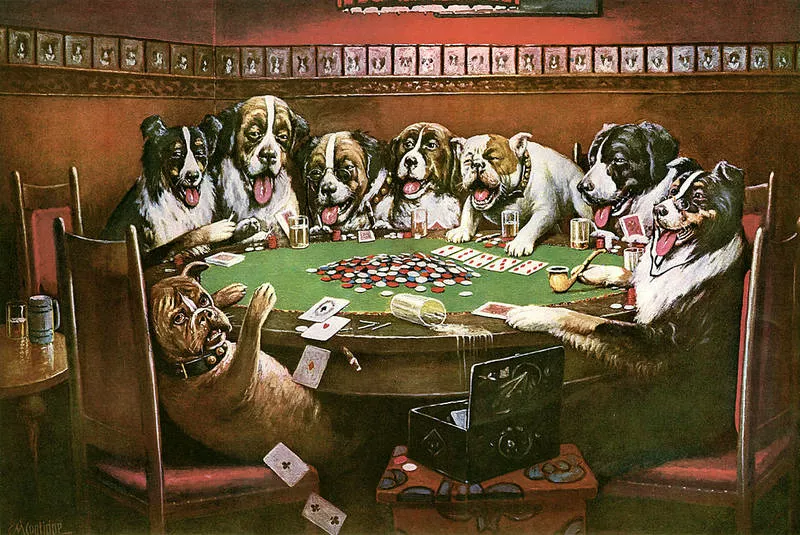
The most popular of these paintings depicts dogs cheating during a game.
In the painting “A Friend in Need,” a pair of bulldogs face off against five huge hounds. Who can blame them for handing each other the cards they need under the table? It is this picture that is most often mistakenly called by the name of the entire series – “Dogs Play Poker.”
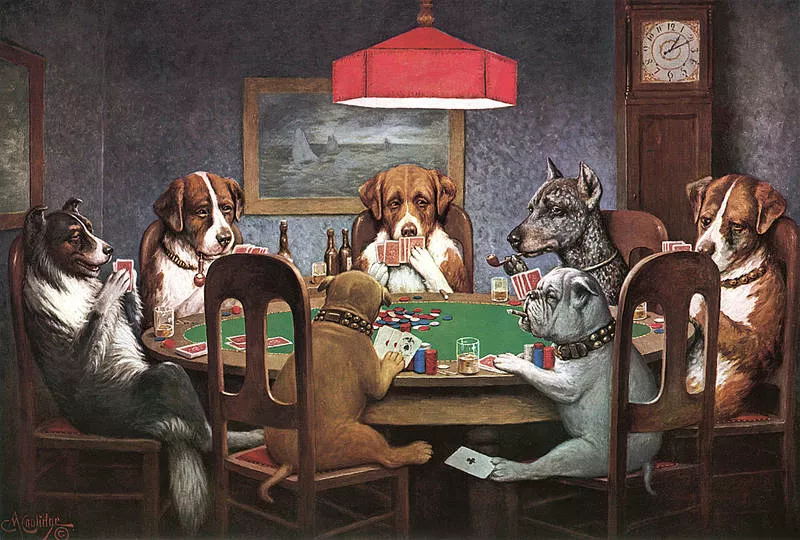
What was Coolidge known for before?
Poker pictures were brought by K.M. Coolidge became famous when he was already over 60. However, he had earlier successes. Coolidge is credited with being the inventor of the face hole photo booth, a carnival ride where tourists can stick their heads through a hole and pretend to be someone else. He received a patent for this invention in 1874.
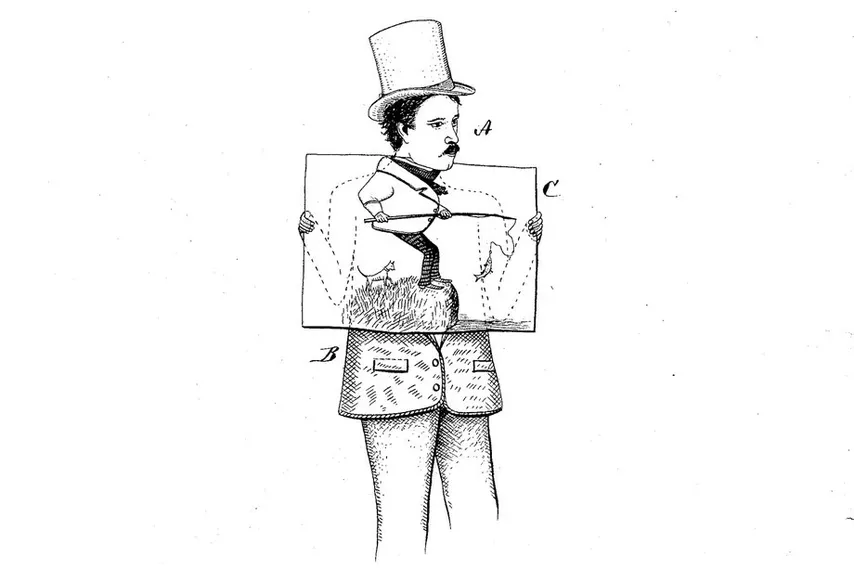
But Coolidge’s “Dogs Play Poker” brought real popularity, reproductions of which were widely distributed on calendars and posters throughout America. The artist managed to sell some of the original paintings for prices ranging from $2,000 to $10,000.
Dogs Play Poker was never particularly successful with critics.
Paintings that were commissioned for commercial use are most often considered kitsch, that is, inherently flawed art. Martin Harris of PokerNews, talking about how pretentious experts evaluate these works, explains: “To them, these paintings are the epitome of kitsch, low-brow culture, a tasteless parody of real art.”
Despite this attitude, these paintings became an integral part of working class home decor
In the 1970s, kitsch took America by storm, and demand for Dogs reached its peak. They were sold in every possible form. As art critic Annette Ferrara puts it, “these signature works are indelibly imprinted in the subconscious of even the least art critic through continuous reproduction on calendars, T-shirts, coffee mugs, random advertising, etc.”
They can be seen as a kind of self-portrait
Coolidge's nickname was "Cash". He was described as an enterprising fellow, and his track record included many professions. Before he started painting for calendars, he painted street signs and houses and also tried himself as a pharmacist, art teacher, and cartoonist. He also founded his own bank and his own newspaper. So perhaps the dogs willing to cut corners represent Coolidge's own ambition.
Kitsch or not, Dogs Play Poker sells for big bucks
At a Sotheby's auction in 1998, Coolidge's original sold for $74,000. In 2005, the paintings "Daring Bluff" and "Waterloo" were put up for auction at Doyle in New York. Before putting them up for auction, predictions were made that a pair of rare paintings would fetch between $30,000 and $50,000. But an anonymous bidder ended up paying $590,400 for them! "A lot of people came out to compete for these paintings, and many of them were not our traditional collectors," Alan Vosell, then senior vice president of painting at Doyle, told CNN. “This is a once in a lifetime opportunity.” That record was surpassed in 2015 when Coolidge's "The Poker Game" sold for $658,000.
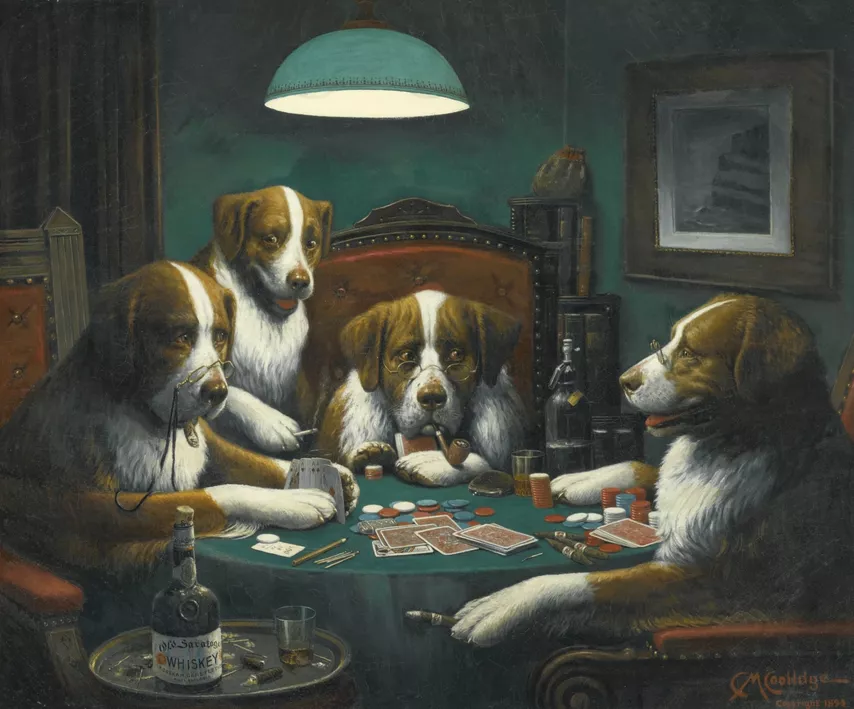
The two paintings have a common storyline
Doyle auction notes say: “A sequential narrative follows the same participants in a poker match. In the first film (“Daring Bluff”), our main character, a St. Bernard, plays a weak hand while the rest of the team maintains an impenetrable poker face. In the next scene (“Waterloo”) we see the St. Bernard raking in a large pot, to the obvious chagrin of his fellow players.”
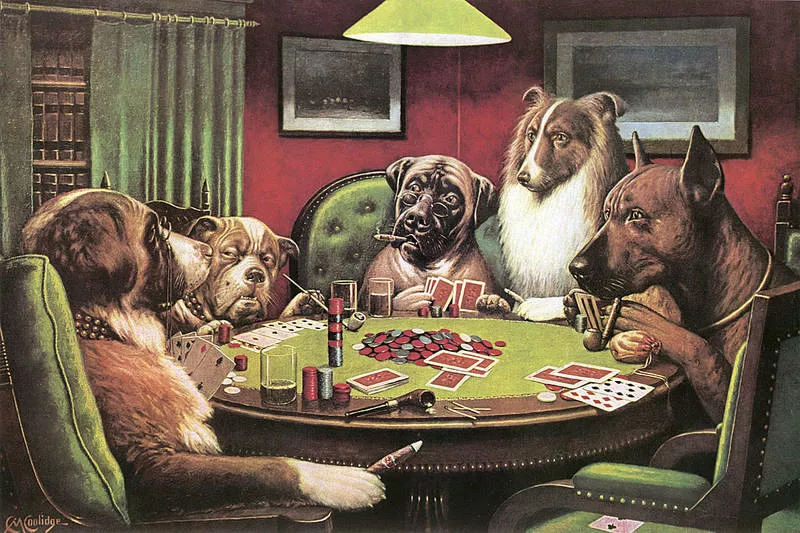
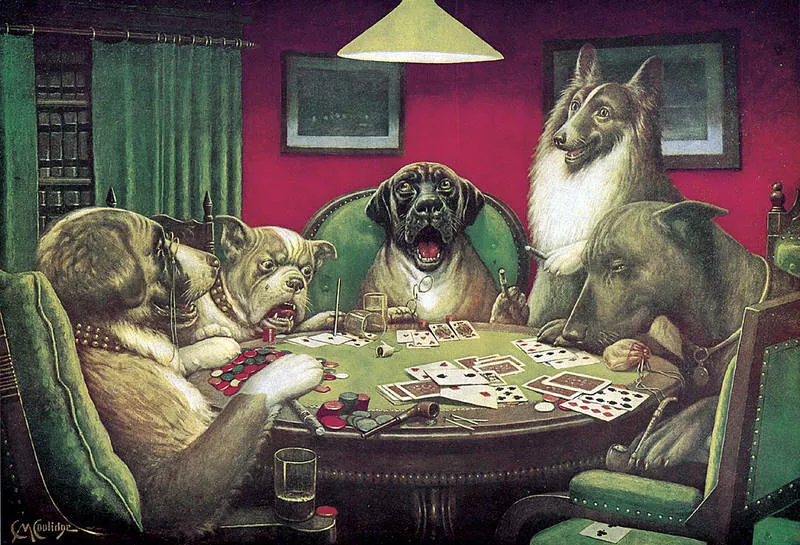
Not all paintings in the “Dogs Play Poker” series correspond to the title
Coolidge painted 16 works as part of this collection, but only nine of them actually depict dogs playing poker. “Higher Education” features helmeted puppies playing football. The painting “New Year in Dogsville” depicts a festive ball with dancing dogs. The painting “The Case of a Broken Promise” depicts a dog trial.
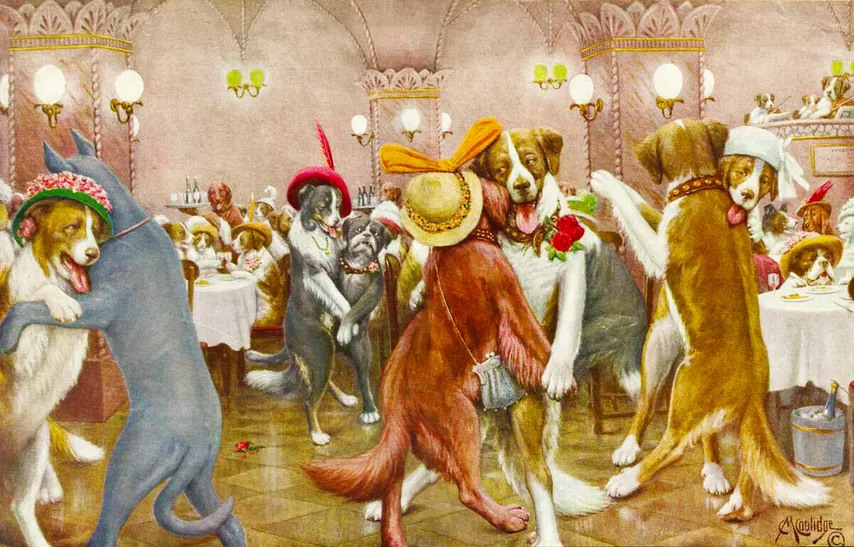
One of Coolidge's paintings is exhibited in Philadelphia, New York (pop. 1,947)
Coolidge grew up in Philadelphia, but until 1991 the city was largely unaware of its former resident's fame. Then his 80-year-old daughter Gertrude Marcella Coolidge took it upon herself to go to Philadelphia and give the city an engraving from her collection. Today the framed work hangs in a one-room museum in the back of the local library. Visitors may also ask to see a slim folder of Coolidge-related materials.
Coolidge's wife and daughter weren't happy with the episode "Dogs Play Poker"
In 2002, 92-year-old Gertrude told the New York Times that she and her mother liked cats more than dogs. However, she agreed that “you can't imagine a cat playing poker. It just doesn't work."
The Dogs Play Poker series has been compared to the plays of Tennessee Williams.
This may sound silly: what do plays like Cat on a Hot Tin Roof and A Streetcar Named Desire have in common with Coolidge's kitschy masterpieces? According to New York Times writer James McManus, these works unite views on relations between the sexes: “The men drink, yell, smoke and play poker. The women who service them... their game is to tame the bad guys.”
For Williams, that means Maggie the cat, Stella Kowalski, or her fragile sister Blanche DuBois. For Coolidge, it's a poodle serving a cocktail or a pair of terriers interrupting the game.
Coolidge drew inspiration from the great artists of the past
The works of Caravaggio, Georges de La Tour, and Paul Cézanne are often cited as inspiration for Coolidge's fanged poker players series.
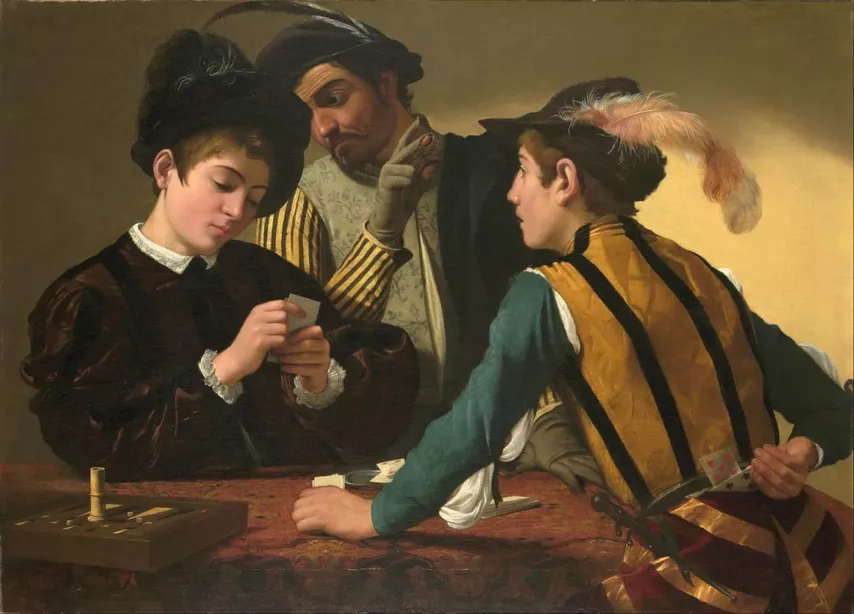
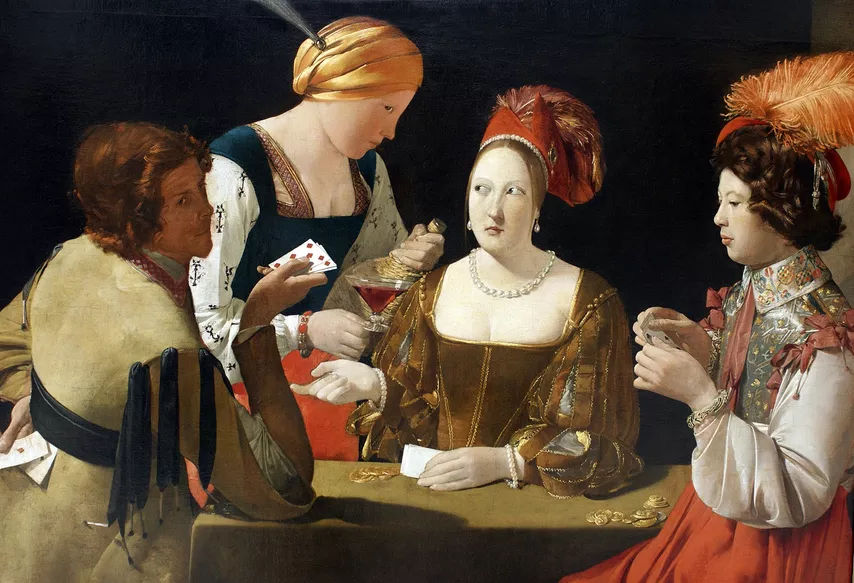
Despite its commercial success, Coolidge's "Dogs" remains disrespected by the artistic elite
Popularity and prestige don't always go hand in hand. Coolidge's work has long been mocked by art critics. Even his 1934 obituary described his main artistic achievement as having “painted many pictures of dogs.” One day on April 1, the Chrysler Museum of Art in Norfolk, Virginia, issued a humorous press release announcing that the institution wanted to host an exhibit called “Dogs Play Poker.” Museum director William Hennessy was quoted as saying: “There has long been vigorous debate in academic circles about the place of canine art in the canon of art history. “I believe the time has come for these iconic images to take their rightful place within the walls of our museums, to balance out the many years of unfair privileging of homocentric art.”
Praise for the series was followed by the addition: “Happy April 1st! Every word printed above is true, except for the suggestion that Chrysler is actually trying to get these pictures."
"Dogs Play Poker" in Pop Culture
They have been mentioned in many works, but their real recognition can be considered their appearance in The Simpsons.
Coolidge in matters of sports ChGK
The specific fame of the artist and the presence of other famous Coolidges in US history made him a frequent guest in questions of sports “What? Where? When?".
It would be more logical to name a well-known phenomenon in honor of Kennedy or Clinton, and not in honor of HIM. The other HE depicts a closed male world. The only exceptions are the sexy waitress serving drinks and the wives kicking their husbands away from the table. Name HIM.
Spoiler:
Answer: Coolidge.
Comment: The Coolidge effect is a phenomenon in biology and psychology in which males become sexually active toward each new female ready for fertilization. Similar behavior was more likely typical of other American presidents, but it got its name in honor of the anecdote about the Coolidges in the chicken coop. Cassius Coolidge is an artist famous for his depictions of dogs; in most of his paintings there are no bitches, but only males.
Handout:
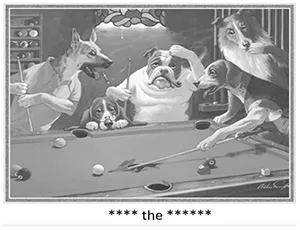
This painting by Cassius Coolidge is named after the character holding the cue and was painted after 1888. What words did we hide in its title?
Spoiler:
Answer: Jack, Ripper
Comment: In 1888, a letter signed with the words Jack the Ripper was sent to a news agency and ended up in Scotland Yard. This is how the maniac got his nickname. In Coolidge's painting, a Jack Russell terrier is shredding the cloth of a billiard table, which is why Coolidge allowed himself such a play on words.
Louis Wain is an artist famous for his paintings of cats. Answer with two words starting with the same letter as the questioner described Louis Wayne.
Spoiler:
Answer: Cat Coolidge
Comment: Coolidge is best known for his painting of dogs playing poker. Wayne's cats in his paintings are also often anthropomorphic.
In the debut video of the American rap artist, on the wall of the bar you can see a reproduction of a painting by his compatriot. This picture was painted at the beginning of the 20th century, and its characters also spend time in a bar drinking and having fun. Name the author of this picture and the rap artist in question.
Spoiler:
Answer: Snoop Dogg, [Cassius] Coolidge
Test: Snoop Doggy Dogg, Snoop Dogg, Calvin Cordozar Broadus Jr.
Comment: Snoop Dogg's debut video has an unexpected plot: the characters drink in a bar, smoke cigars, and play poker. True, along the way they turn into dogs and back. In addition, there is a painting on the wall by Coolidge, who also loved to depict the beautiful life of a dog.










